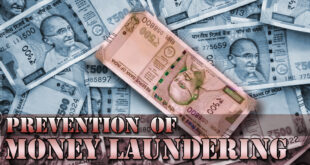The collapse of the financial institution took the world by surprise leaving well over $600 billion in debt as well as 25,000 employees in shock
It was “Lehman Weekend.” The moment in September 2008 when the 150-year-old investment bank Lehman Brothers collapsed, precipitating the worst global economic crisis since the 1930s. After failing to find buyers for the troubled financial giant, that was weighed down by risky debt holdings made up of at sub-prime mortgages, U.S. authorities declined to offer a bailout and allowed the institution to fail. Monday, September 15, 2008, at 1:45 a.m., Lehman Brothers filed for bankruptcy, taking the world by surprise leaving well over $600 billion in debt, as well as 25,000 employees in shock.
It was the biggest bankruptcy in American history. On Wall Street, the Dow Jones plunged 500 points, the largest drop since the attacks of September 11, 2001. Stunned traders streaming out of the building carrying boxes of their belongings became a symbol of the crisis. Some were caught by surprise. But others, like Lawrence McDonald, a former trader and co-author of a 2009 book on the collapse — “A Colossal Failure of Common Sense: The Incredible Inside Story of the Collapse of Lehman Brothers” — said the management had long been alerted to the excessive risks they took to increase short-term profits.
The top Lehman leadership, housed on the bank’s 31st floor, “drove us 162 miles (261 km) an hour…right into the biggest sub-prime iceberg ever seen,” he told AFP. The Fed and Treasury tried to find a buyer, negotiating in vain with a South Korean bank, then with Bank of America and Barclays. But while the government just a week earlier took over mortgage giants Fannie Mae and Freddie Mac — government-sponsored private enterprises that guarantee more than $5 trillion in home loans — in the end, officials choose to abandon Lehman.
A few days later, Uncle Sam would rescue insurance giant AIG for $180 billion, before providing another $700 billion dollars in a controversial recapitalisation plan to prop up banks: the Troubled Asset Relief Program (TARP) to try to shore up the teetering financial system. Authorities found themselves between a rock and a hard place and have been widely criticised for sacrificing Lehman Brothers but saving other banks such as Goldman Sachs. “The thing we get the most criticism for is letting Lehman go down,” said Henry Paulson, who served as Treasury Secretary under then President George W. Bush and was at the helm at the start of the crisis. Officials concluded that Lehman was so weak, and had so little collateral, that a bailout would be simply unworkable.
Source : https://www.thehindu.com/todays-paper/tp-business/lehman-weekend-the-biggest-bankruptcy-in-american-history/article24906041.ece
Check Also
PMLA: Combating Money Laundering and Financial Crimes
Concept : The Prevention of Money Laundering Act (PMLA), enacted by the Indian government, targets …
 Chinmaya IAS Academy – Current Affairs Chinmaya IAS Academy – Current Affairs
Chinmaya IAS Academy – Current Affairs Chinmaya IAS Academy – Current Affairs



